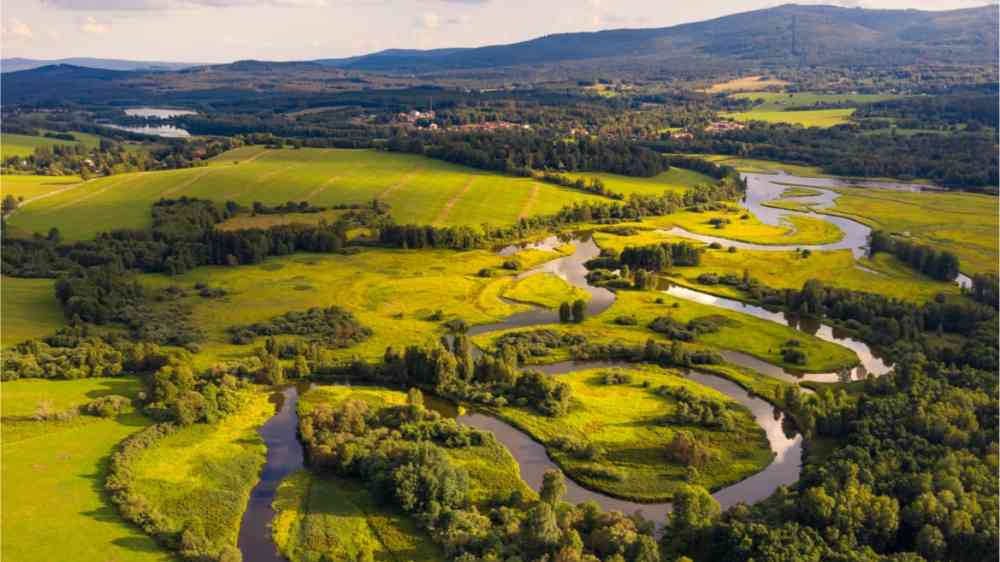Recentring nature to solve the global water crisis

Amid a worsening global water crisis, world leaders will gather at UN Headquarters in New York 22-24 March for the first UN Water Conference since 1977. During this historic moment, all eyes will focus on SDG 6 for water and sanitation. Time is of the essence. About 30 percent of the world’s population still lacks access to clean drinking water and progress on SDG 6 continues to be “alarmingly off track”.
During this historic conference, we call on leaders to recentre nature in their approach.
Nature-based solutions: The most elegant solution
To do so, we must scale our investments in nature-based solutions (NBS) for water, which parallel long-held Indigenous water knowledge.
NBS harness the power of natural ecosystems—forests, wetlands, and grasslands—to filter water, regulate water flow, and protect communities from floods and droughts.
Addressing the broader water-biodiversity-climate crises
NBS are one of the most elegant solutions in our water policy and investment toolbox because they recognize the interconnectedness of the triple water-biodiversity-climate crisis.
Nature degradation is one of the primary drivers of the water resource management challenges we face. Today, 75 percent of Earth’s terrestrial environment is severely altered, an estimated 65 percent of the world’s forested area is degraded, just 13 percent of wetlands present in 1700 remain today.
Meanwhile, human-caused climate change is intensifying the global water cycle, and extreme flooding and droughts are expected to become more severe. Just months ago, one-third of Pakistan was submerged during historic flooding, while extreme drought gripped other regions.
By degrading our forests, wetlands, and grasslands, we have limited their natural abilities to provide us with the water-related ecosystem services they once did—and can again. To meet SDG 6 targets, we must co-solve for biodiversity (SDG 15) and climate (SDG 13). NBS can lead the way.
Indigenous Peoples: The original authors of NBS
While NBS have been more recently defined, they are not new. Indigenous Peoples have implemented many of these same approaches for centuries.
Indeed, Indigenous Peoples are the original authors of NBS. The UNDP Equator Initiative provides hundreds of examples. Here are just a few:
- Wetland forest reduces disaster risks in northern Thailand: In northern Thailand, the Tai Yuan (Khonmueang) Indigenous community, recipient of the 2020 Equator Prize, secured Indigenous land rights to protect a 483-hectare wetland forest that naturally buffers the village from floods and droughts. Using a nature-based approach based on Indigenous water knowledge, the wetland forest is credited with protecting local villagers from devastating floodwaters in 2010, while neighbouring villages were submerged. The wetland forest provides an estimated US$4 million in benefits annually.
- Rainforests protect water in Ecuadorian Amazon: In the mega-biodiverse Ecuadorian Amazon, the A’i Kofan, Siekopai, Siona, and Waorani Indigenous Peoples have protected more than 2 million hectares of rainforest from extractive industry. Inspired by Indigenous Ecological Knowledge, the group’s approach is preserving the ecosystems’ ability to provide NBS for water in the future, while also providing significant carbon sequestration. Recipient of the 2020 Equator Prize, Alianza Ceibo has also implemented rainwater collection, providing clean water to more than 6,000 people.
- Restored riverbanks improve future water security in Kenya: In the Mara River Basin of Kenya, the Nashulai Maasai Conservancy, recipient of the 2020 Equator Prize, uses Indigenous Ecological Knowledge to ensure water security for future generations. By replanting more than 10,000 trees and 25,000 tree seeds, the group is restoring a stretch of the Sekenani River toward pre-colonial ecological health.
- Indigenous land-water connections protected in Canada: Łutsël K’é Dene First Nation, recipient of the 2020 Equator Prize, has protected 2.6 million hectares in an Indigenous protected area In Canada’s Northwest Territories. Based on Indigenous Ecological Knowledge underscoring the deep connections between land and water, the intact landscape continues to provide some of the world’s cleanest freshwater.
Interest surges for NBS, but not fast enough
NBS for water have risen in visibility on the global agenda during the past decade. This interest stems partially from emerging methods and tools to quantify the monetary value of ecosystem services they provide—for water, climate, biodiversity, and other priorities. For instance, it is estimated that mangrove restoration and protection could generate US$1 trillion by 2030 in net benefits, forest restoration may generate up to US$30 in benefit for each dollar invested, and the ecosystem services provided by the world’s wetlands are valued at as much as $15 trillion each year.
Recent research quantifying the climate co-benefits of land stewardship has also increased interest. A landmark 2017 study found natural climate solutions—land stewardship supporting forests, wetland, and other ecosystems—could provide more than one-third of climate mitigation needed to reach the Paris Agreement’s 2-degree goal.
Despite these advances, NBS for water have yet to be fully mainstreamed. They remain underutilized and underfunded. This must change.
UN Water Conference call for action
The UN Water Conference and momentum following can recentre nature as a key solution for water. NBS can be rapidly scaled through holistic landscape-scale strategies that combine traditional built infrastructure with ecosystem-based natural infrastructure. When developing NBS, we must ensure effective stakeholder engagement of local communities based on a Human Rights-Based Approach.
The world’s 370 million Indigenous Peoples are powerful change agents for nature, influencing the management of more than a quarter of Earth’s land surface. As we work to recentre nature for water, we must uphold Indigenous land rights. We must also acknowledge and include Indigenous Peoples, who have effectively implemented many of these strategies for centuries—or millennia.